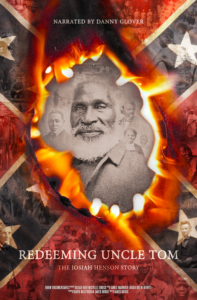War has broken out in Ukraine. All of Eastern Europe is on alert. Some credit members are on the move. Others wait to learn what’s next.
When a geo-political crisis occurs, America will be involved. How much and when depends on events.
One sector of our society at the leading edge of these situations are military credit unions. Many have spent years planning to help their member’s financial preparedness for whatever comes next.
Frontwave Credit Union’s Military Relations Team
The credit union’s self-description: There aren’t many communities like this one. One foot in the Pacific, the other in the desert. Home to the world’s greatest fighting forces — and a community of blue-collar fighters.
Five years ago, CEO Bill Birnie established the Military Relations Team. He hired Chip Dykes and two other former marines to lead this group which focuses directly on the financial well-being of military members and their families.
Over 50% of the credit unions 117,000 members are current or former military members and family.
Front wave has been the credit union on base at Camp Pendleton since 1952. It also serves at three other bases in the area.
Camp Pendleton is the location for all initial basic training on the West Coast for over 17,000 new marine recruits each year. Bill was concerned about retention of these new military members, many of whom would be assigned out of the area after training.
Chip’s team are all certified financial counselors. Their purpose is education on all aspects of money management and financial planning for the new recruits and during every phase of subsequent training.
This counseling is especially important prior to deployment. For example how do you follow your finances when in an area with no Internet?
The team focuses on member’s financial needs at all levels of the service at each of the four bases where they have branches. In 2021 they provided over 10,000 marines and family members with basic and more advanced financial courses.
Helping Credit Union Staff Understand the Military Member
Just as important is helping credit union staff understand the needs of the military member with whom they work with daily.
Bill and all three team members are marines. Many staff have had little direct experience of military life. The team’s internal mission is to help customer service personnel understand needs from the military member’s perspective.
The Ukraine Crisis
When events such as the Ukraine invasion occur, “our ears perk up,” says Dykes. The European theater is served from units located on the East Coast, so it may not immediately affect West coast units.
When there are relocations, the team works directly with all units on the ground to ensure their financial and personal affairs are in order. And to offer help to family while the service member is away.
Following Events in Ukraine
This article provides a current visual map of Ukraine and the population of its major cities which are now referenced in hourly news updates. Facts on the country’s demographic trends, its major natural resources and a short history of its relations with the Russian Bear are summarized after the large scale country portrait.
Solzhenitsyn on Ukraine-Russia Relations
(from an essay written June 2014 when Russia annexed Crimea)
“It pains me to write this as Ukraine and Russia are merged in my blood, in my heart, and in my thoughts. But extensive experience of friendly contacts with Ukrainians in the camps has shown me how much of a painful grudge they hold. Our generation will not escape from paying for the mistakes of our fathers.”
There are several terrific English language websites which provide news directly from Ukraine, which are updated frequently. One is Kyiv Independent and the second the English section of the Ukrainian Information Agency.
The Independent includes minute by minute stories from across the country.
I will share other examples of credit unions serving their members who are or will be on the front lines of this crisis.


